R360
Plainridge Park’s new slots and video gaming parlor took in $6,154,626.38 during its first week of operation, or more than $703 for each of the 1,250 machines per day. Even considering opening week excitement and whatever pent-up local demand there might have been, that’s an impressive haul.
“More than $6 million — that’s an incredible number … Plainridge is showing it can certainly compete with the existing casinos,” New England casino market expert Clyde Barrow tells the Boston Globe.
The nine percent of those revenues designated for the Race Horse Development Fund totaled $553,916.37; that’s $138,479 for harness racing, which takes place at Plainridge. I was going to insert a sentence or two here noting how much Plainridge handled on live racing during the same period, and maybe try to draw a conclusion from the slots-RHDF-handle numbers, but tracking down harness handle figures turns out to make Thoroughbred racing look like a transparent, open industry. (Harness friends, any tips?)
So, let’s use 2014 numbers, taken from the racing office’s annual report (PDF): Last year, the track handled a total of $1,108,715 on-track on 82 race days, or $13,521 per card, and handled another $6,576,620 on its simulcast feed, for an average of $93,724 per card. Pull the Pocket does a bit of estimation/comparison:
Let’s say Plainridge does $100,000 in handle per card. At a low signal fee, let’s set revenue at 5% of that handle, which would mean the track and purses would drive $5,000 per card in revenue.
If they race three cards a week, that’s $15,000 in revenue.
$15,000 from racing, $567,000 from slots.
His conclusion: There’s no point to doing the work of growing handle when there’s so little payoff compared to the casino money. Plainridge is booked for 105 cards this year. Assuming they average about the same per card as last year, they’ll handle almost $10 million, while paying out approximately $4 million in purses (estimate based on averaged recent daily purse levels; in 2014, Plainridge paid $2.6 million in purses). There’s not much incentive to push casino patrons into betting on the local racing product either: The track’s portion of daily live handle runs roughly $1400 per card on-track, or about the gross on two slot machines.
Steve Davidowitz on the too many races, too few horses situation:
In my own judgment, racetrack managers in most states have failed to see the problems they have created for themselves. Fact is, there are so many tracks open for so many months each year, the majority have had to cut down on the number of races they offer each day.
Instead of a five day racing week with nine and 10 races per day, Santa Anita just ran four-day race weeks, with eight races on Thursday and Friday. That pattern is repeated in many states that used to operate five and six days a week with plenty horses left over after running nine and 10 races a day! Even Gulfstream Park had eight race cards …
And yet, when Saratoga opens for 2015 on July 24, it does so with 427 races planned, or about 14 more than 2014, when NYRA slightly reduced the total. The schedule calls for nine-race cards on Monday, 10-race cards Wednesday-Friday and Sunday, and 11-race cards on Saturday, excepting the Travers and Woodward cards (PDF). This is also during a meet in which most graded stakes have been moved to weekends and stakes that previously headlined days — such as the Personal Ensign and Sword Dancer — have been bundled into a “Big Day.” As Mike Watchmaker, taking on the super card trend, observes, “The daily stakes schedule at Saratoga does look pretty lean in the middle of this upcoming meet” (DRF+). Saratoga is great, and it can be a grind. I fear this year it’s going to be more of the second for even the most devoted fans.
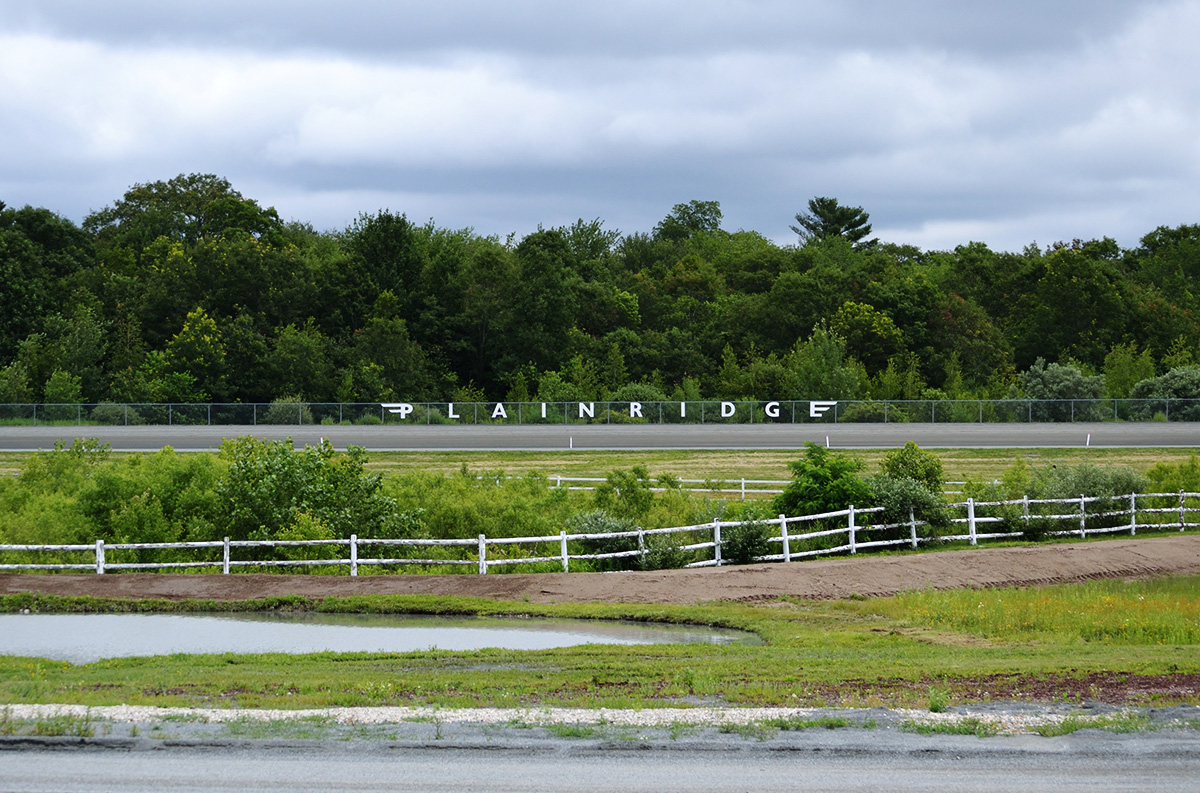
It’s the only horse racing going in Massachusetts right now, so I went to Plainridge Park on Monday to catch Thursday’s rescheduled card. First post was 11:00 AM — too early to enjoy a snack before at Doug Flutie’s Sports Bar, although not too early for the crowd that was already settling into the new, cacophonous casino floor with its 1,250 slot and video gaming machines. When I emerged onto the track apron — after following a winding hallway that lost more glitz the closer it got to the beige and Formica simulcasting room — it was almost a relief to count only 28 other people out there with me.
That number went up, although not by much. By noon — that was race four — fewer than 100 people were along the rail or watching the flat screens inside. What I took for a larger group in the simulcasting room turned out to be eager casino patrons signing up for players’ rewards cards — Plainridge was processing their new loyalists in the one place they had space and the noise level didn’t make it impossible to capture that all-important marketing data.
I don’t know much about Standardbreds or harness racing, except that they’re sturdy animals who often run weekly and that horses breaking from the one hole have an outsized chance at winning because of likely ground saving. I also know that at Plainridge they’re now running for higher purses funded by casino licensing fees and a percent of gaming revenues via the 25% split harness racing gets from the state’s Race Horse Development Fund, which makes total handle a little less of a concern for horsemen and the track, and that — today, anyway — they were running races every 12 minutes. It was almost as though they were running the card as a formality.
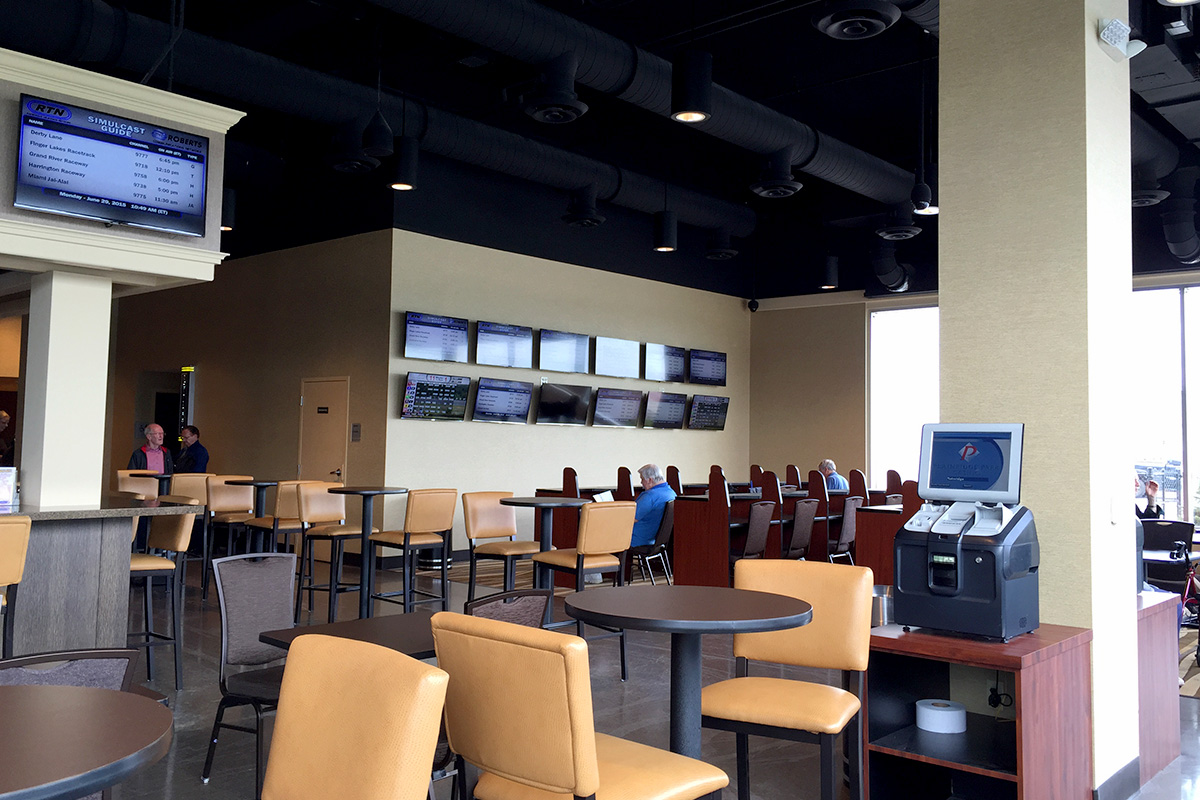
The Plainridge Park simulcasting room.
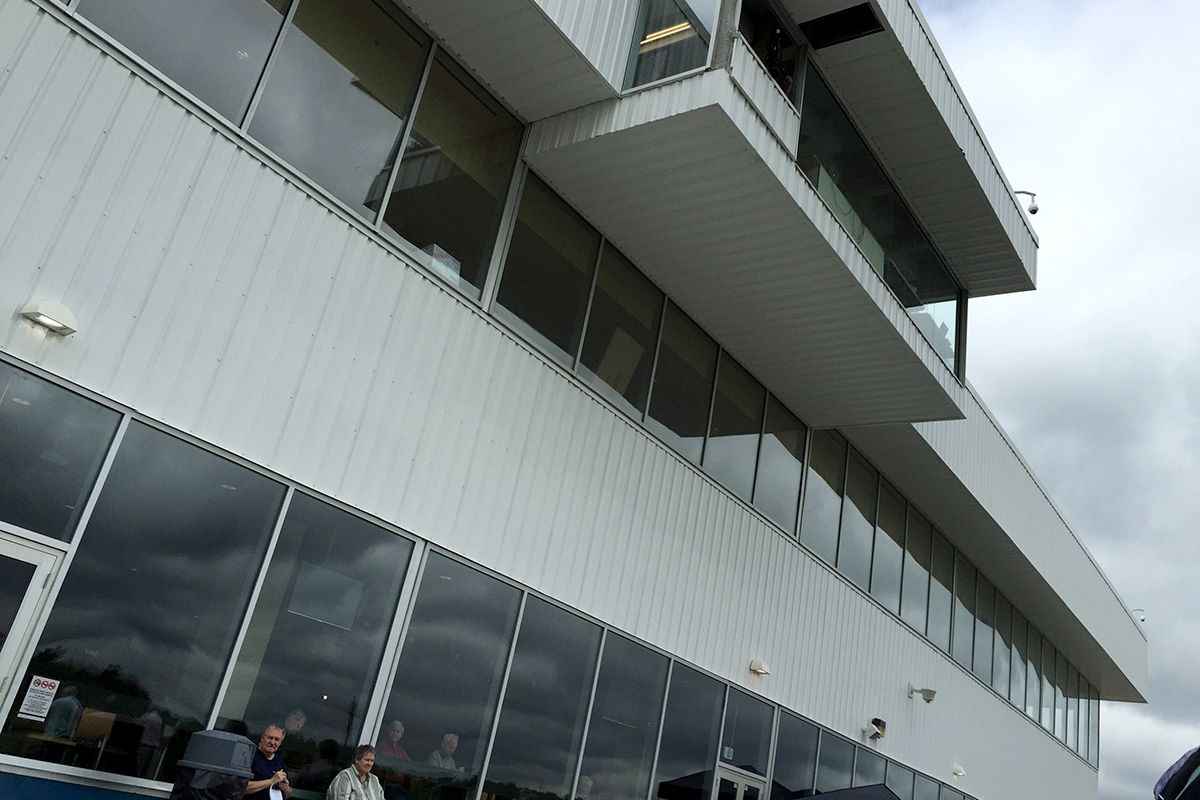
Grandstand exterior. Tents and picnic tables were set up along the wall.
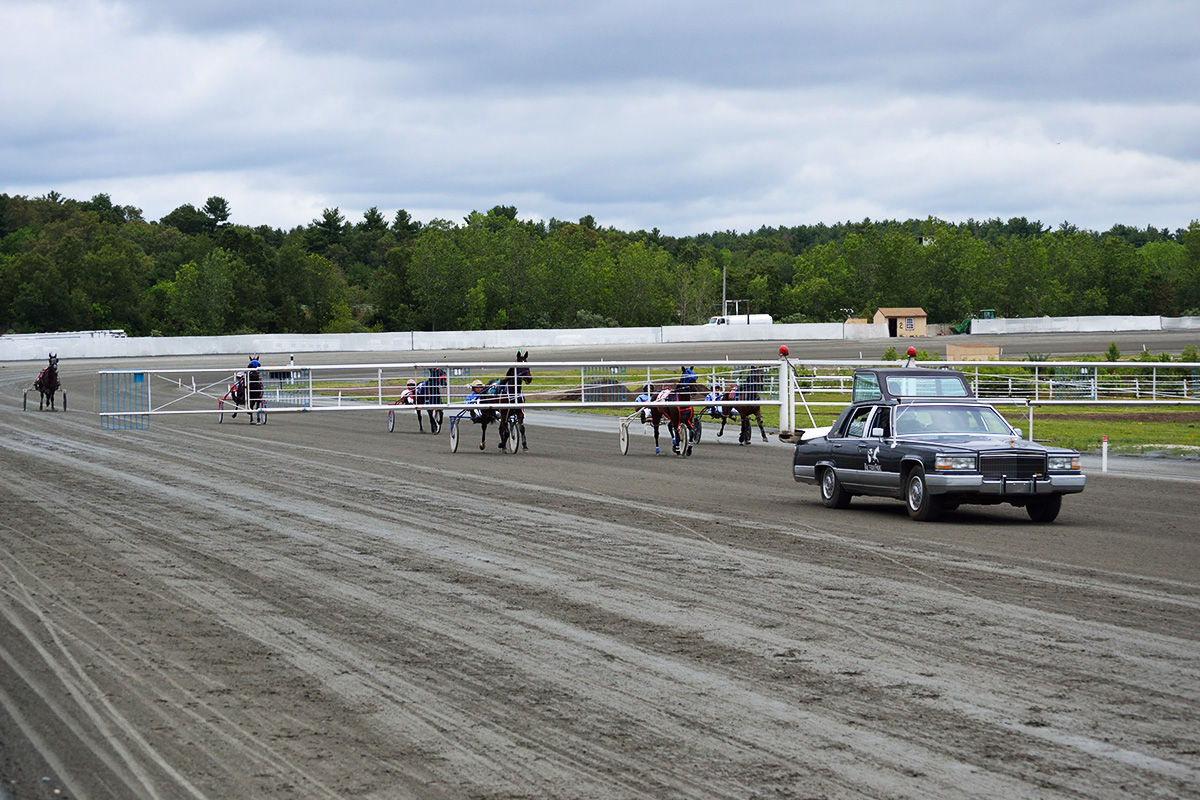
Lining up for the start of a race. A classic car with “Raceway Park” stenciled on the doors handled gate duty.
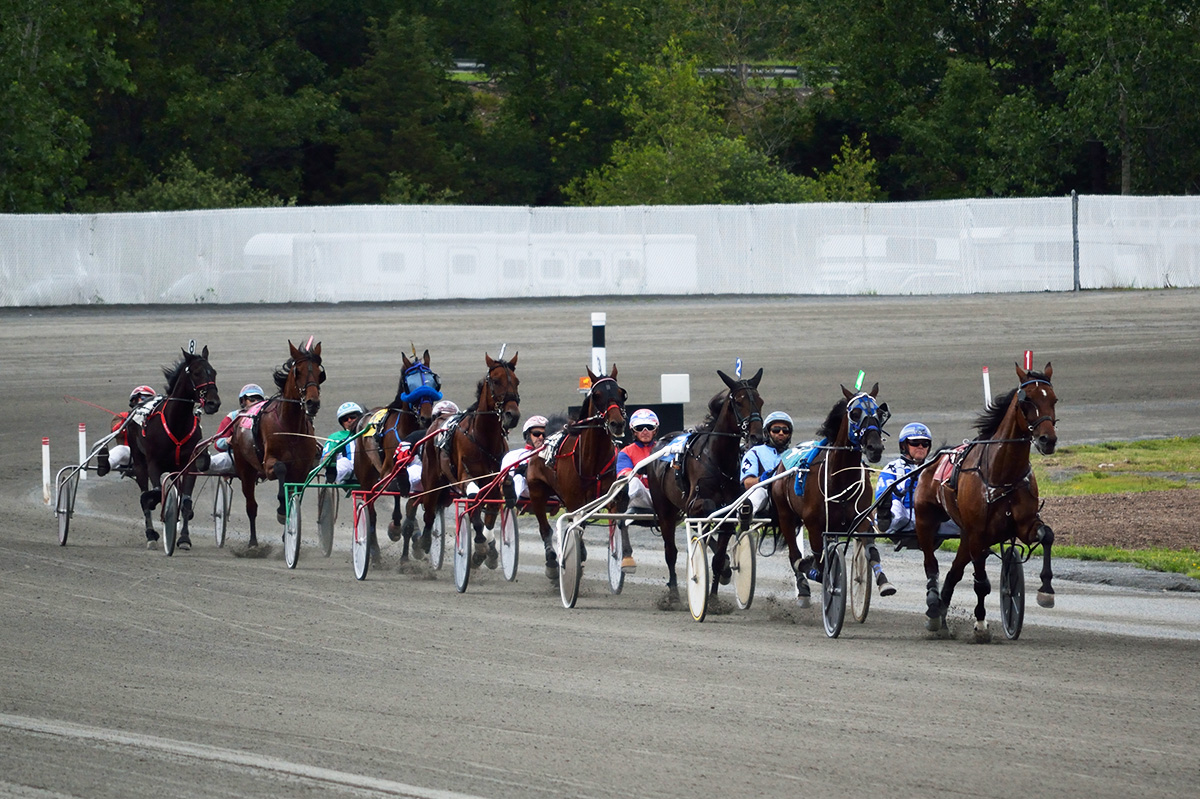
Coming down the stretch for the first time.
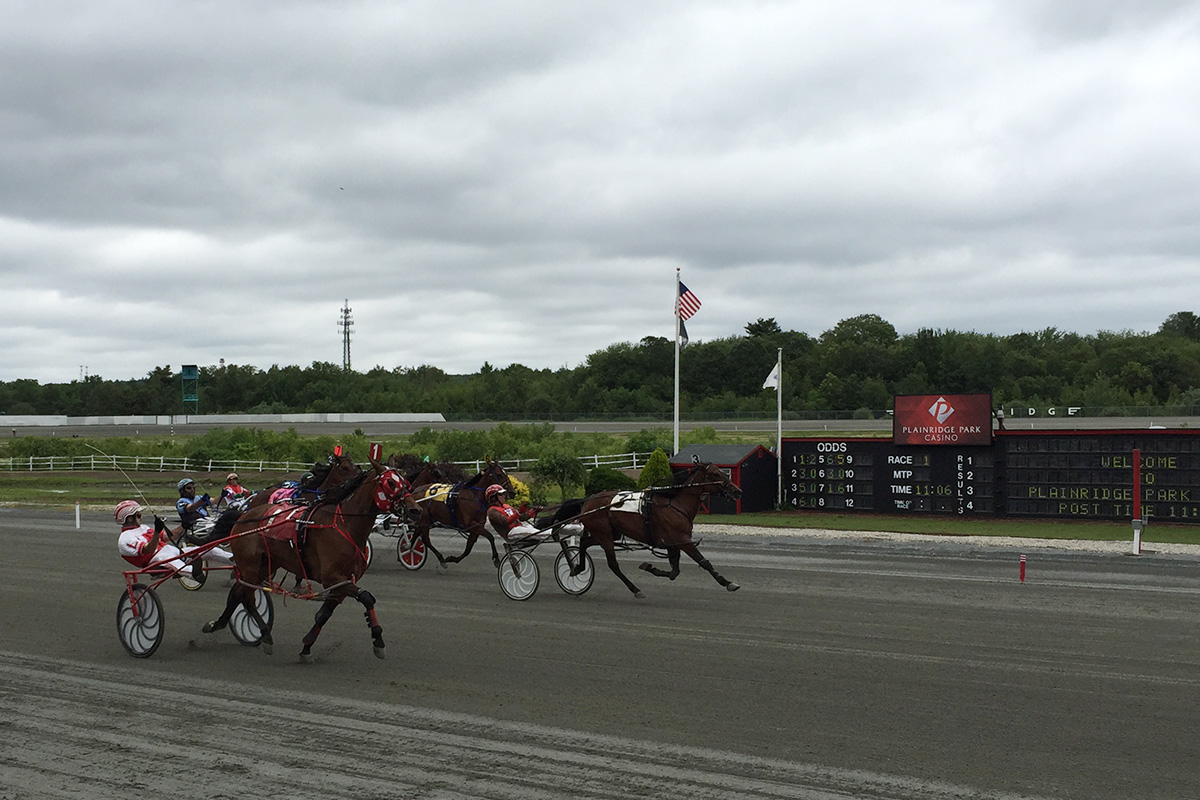
Debs Girloffortune (#1, outside) wins the first race.
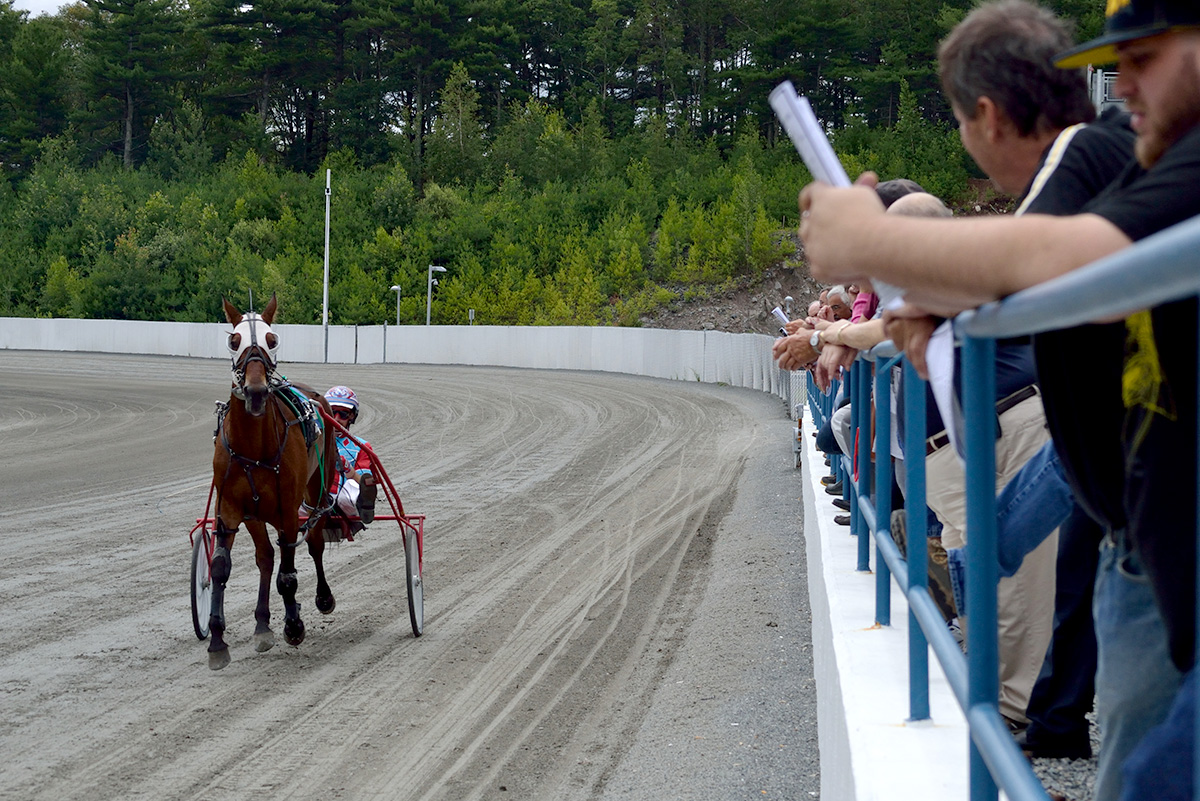
A horse warms up in front of the crowd along the rail.

Trêve is traveling well towards a third Prix de l’Arc de Triomphe, winning the Grand Prix de Saint-Cloud on Sunday by 1 1/4 lengths over classy Flintshire. Trainer Criquette Head-Maarek (above) said after that she was quite confident:
“I was never worried. She was a little on her toes before the race but Thierry rode her beautifully. I’m delighted as Flintshire is a very good horse. It’s just a dream.”
The Saint-Cloud was the 5-year-old mare’s second win in as many starts this year, a much more promising record than her early 2014 campaign — she was 0-for-2 at this time last year en route to her second Arc victory.
“On avait le terrain un peu trop ferme pour elle mais on dit que les bons chevaux vont dans tous les terrains,” said jockey Thierry Jarnet of Trêve’s effort. Google Translate comes to the aid of my high school French to reveal that he was saying something along the lines of, “The ground was a little too firm for her, but they say good horses go in any condition.” Watch the replay:
More on the Saint-Cloud: “Flintshire famously loves a fast surface and he will surely never have a better chance of turning over Treve.”
Copyright © 2000-2023 by Jessica Chapel. All rights reserved.